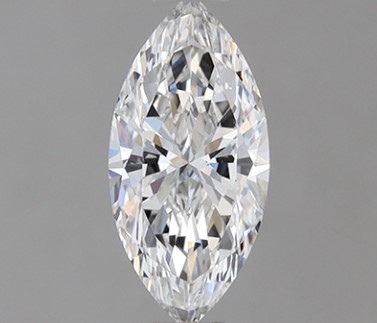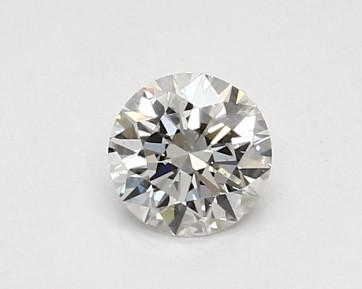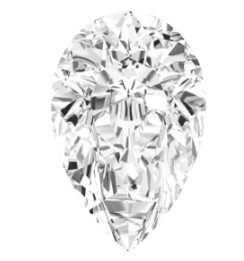
With the surge in social media trends, people seek new ways to make their engagement rings stand out. But with the increasing diamond and jewelry prices, it becomes tough to do so.
The designs and sizes of the center stone you want often differ from what you can afford. That is where the fancy colored lab diamonds come in. They benefit the buyer with their range of design variety and their affordability.


What Are Lab-Grown Diamonds?
In simpler terms, Lab-grown diamonds are an artificial alternative to natural ones. Specific chemical compositions are used in creating lab-grown diamonds.
Lab-grown diamonds have similar physical and visual qualities as natural diamonds. In fact, the human eye often can not even tell the difference between the two. It often takes a trained gemologist with high-quality equipment to distinguish between them.
Lab-grown diamonds’ cut, size, and color make them a good substitute for natural ones. Especially when natural diamonds of your desired size and caratage are unaffordable.
How Are Lab-Grown Diamonds Made?
Natural processes cause diamonds to form. This means they crystalize as an isometric cubic structure beneath the surface. Whereas, Scientists and technicians create Lab-grown diamonds using chemical vapor deposition (CVD). Or at high-pressure high-temperature (HPHT).
A specialist places a diamond seed into a chamber in the CVD process. There, it goes through extreme temperatures and carbon-rich gas. The carbon gas ionizes over the course of just a few weeks. This causes the particles to adhere to the original diamond slice. — Eventually coagulating into a whole diamond.
In the HPHT process, pure carbon endures intense heat, pressure, compression & electric pulses. The carbon eventually disintegrates and forms a diamond. Any metal traces found in a diamond treated with HPHT will be minute and undetectable to the human eye.
Pros and Cons of Lab-Grown Diamonds
Pros-
- Natural diamonds of similar size, color, and clarity cost 30-40% more than lab-grown ones.
- Lab-grown diamonds are not mined. Mining can degrade the environment and pose a health hazard to workers. While the Kimberly Process has helped determine a diamond’s origin. It still does not account for human rights factors.
- In the last five years, lab-grown diamonds have skyrocketed in popularity. Even popular natural diamond sellers are a part of this trend.
Cons-
- Due to their abundance, lab-grown diamonds’ value will continue to decline. This will affect the resale value as you can not get them appraised.
- While well-funded corporate foundations run most diamond labs. The natural diamonds industry does support miners financially. That way, the natural diamond industry provides employees with $4 billion in revenue. — and $6.8 billion through the market supply.
- Despite avoiding environmental problems by avoiding mining, lab-grown diamonds still create sustainability problems. It requires huge amounts of energy to create a lab-grown diamond, as it creates heat and pressure.
How Much Do Lab-Grown Diamonds Cost?
According to many surveys, lab-grown diamonds, on average, cost 50%-60% less than natural diamonds. Mostly, this difference is due to the demand and supply ratio. The demand for natural diamonds is much higher, while the supply is scarce.
On the other hand, lab-grown diamonds have no supply limitations as they are manmade. Due to their abundance, they cost much less than natural diamonds. Apart from demand, as they are not mined, much fewer labor, transportation, and other costs are involved.
Are Lab-Grown Diamonds Worth Anything?
While their market is not as big as the natural diamonds market, people still buy lab-grown diamonds. As they cost much less than natural diamonds, it is a great deal. The federal trade commission considers lab grown diamonds to be real, actual diamonds.
In other words, even though you can get a resell value for them, it’s often not as exciting as natural diamonds. You can not get them appraised, either. These factors make them a good buy as a substitute for natural diamonds and better than cubic zirconias. But they are still not a great investment option.
Do Lab-Grown Diamonds Get A Diamond Certification?
While their resale value may not equal natural diamonds, high-quality lab-grown diamonds come with grading certificates. Recognized laboratories such as GIA and IGI provide these grading certificates for diamonds as proof of their genuineness. IGI provides these grading certificates for lab-grown diamonds.
Do Lab-Grown Diamonds Offer Variety Similar to Natural Ones?
Lab-grown diamonds offer similar styles, cuts, shapes, and colors to natural diamonds. Take the lab grown marquise diamond sold by Daniel William Diamonds. This marquise diamond almost looks identical to a natural marquise-shaped diamond.
Various lab-grown diamond shapes and cuts are available in the market today. Some jewelry brands also offer customization services. So take your sweet time looking for the one you love!
Most Popular Lab-Grown Diamond Cuts Offered By Daniel William Diamonds
Marquise-Cut Lab Grown Diamond


This lab grown marquise diamond ring is the perfect diamond shape for those who love to shimmer. The marquise cut is known for its shine and elongated, elegant appearance. A Marquise diamond can make any jewelry piece appear bold and exotic.
Once you put a Marquise on your lover’s finger, she will forever treasure it as a symbol of the love you share. This classy but sassy diamond shape is perfect for people hungry for adventure and edge.
Round-Cut Lab-Grown Diamond


A round-cut diamond is always adored for its brilliant and unparalleled shine. A round diamond is undoubtedly the best shining diamond shape with its 58 facets and opulence. This lab-grown round-cut diamond comes in various carat weights and sizes to please your beloved.
Any jewelry piece studded with round-cut diamonds can win over anyone’s heart. The round-cut diamonds possess charm and elegance, which no other cut can compete with. This round-cut diamond is perfect for a lady with an affinity towards luxury and excellence.
Pear-Cut Lab Grown Diamond


A pear-cut diamond is the best choice for those of you who love your jewelry flashy and blingy. The pear shape is popular for its huge appearance and excellent shine. A pear-cut diamond ring can make your hand look extremely beautiful and your fingers very slender.
If you have a taste for the larger things in life and aren’t afraid to be bold with your jewelry, this is the diamond shape for you!
Apart from these, Daniel William Diamonds also sells a variety of other diamond shapes and cuts. So be sure to check them out as well.
Conclusion
Lab-grown diamonds may not completely take the jewelry market by storm, but they will surely make a big impact. Millennials specifically are attracted more toward lab-grown diamonds for their affordability and variety.
Let us know what you think about lab-grown diamonds in the comments below. We would love to hear your thoughts on how they can change the jewelry game in 2023!
For More: Fashion Jewelry






